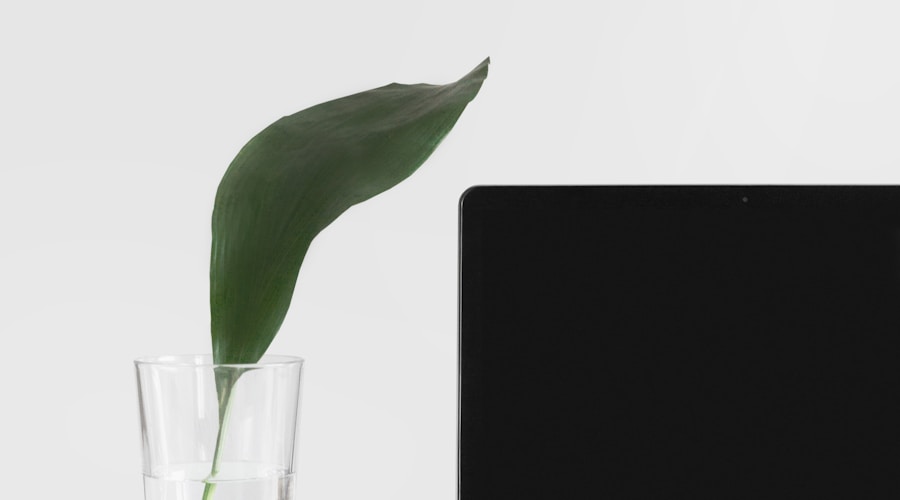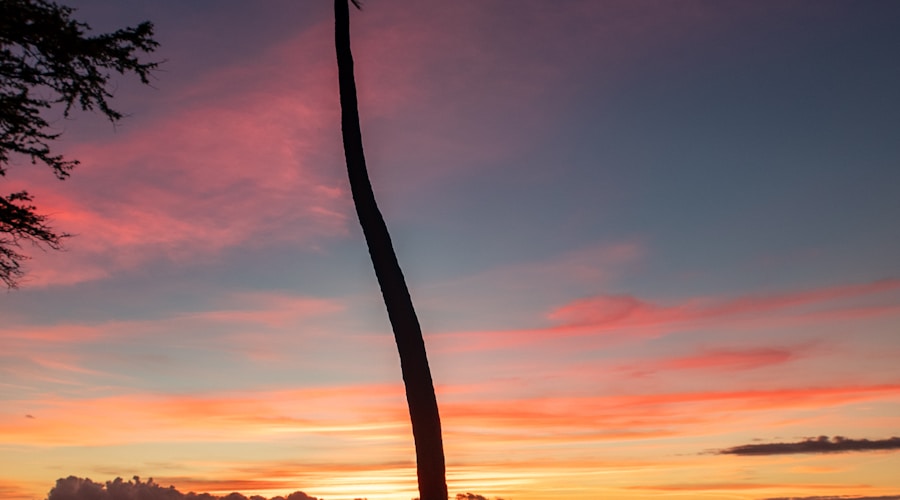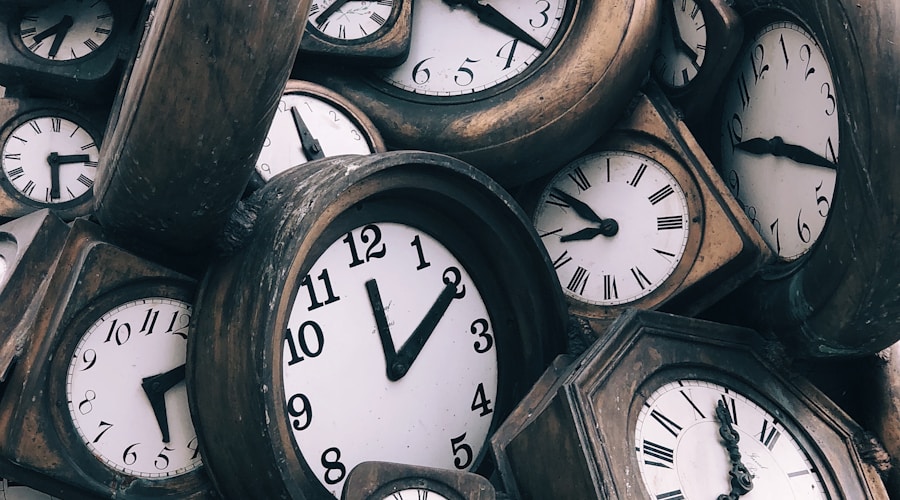Welcome to the world of creative projects! Whether you're a professional artist, graphic designer, writer, or any other creative professional, you know how crucial it is to balance creativity and productivity in your work. It's not always easy to find the perfect equilibrium, but with the right strategies and mindset, you can maximize your efficiency and produce outstanding work while staying on track with your goals.
In this article, we will explore various techniques and methods to help you navigate the intricate dance between creativity and productivity. By the end, you will have a toolbox of practical tips to streamline your creative processes and boost your overall effectiveness in delivering exceptional results.
As the renowned author Elizabeth Gilbert once said, "You need to find the right balance between the randomness of creative flow and the structure of productivity to produce your best work."
So, let's dive in and discover how to achieve this delicate balance and create a more fulfilling and successful creative journey for yourself.
Understanding Creativity and Productivity
When it comes to creative projects, finding the balance between creativity and productivity can be a challenge. But understanding the relationship between the two is crucial for maximizing efficiency. Creativity is the ability to think outside the box, to generate new ideas, and to come up with innovative solutions. On the other hand, productivity is about getting things done in a timely and efficient manner.
As Steve Jobs once said, "Creativity is just connecting things. When you ask creative people how they did something, they feel a little guilty because they didn't really do it, they just saw something. It seemed obvious to them after a while."
Understanding creativity and productivity as complementary rather than opposing forces is the first step in maximizing efficiency in creative projects. It's about finding the harmony between generating ideas and bringing them to fruition. As you embark on your creative journey, keep in mind that creativity fuels productivity, and productivity channels creativity.
As you strive to strike a balance between creativity and productivity, remember the words of renowned artist Pablo Picasso: "Inspiration exists, but it has to find you working." This quote encapsulates the idea that creativity doesn't always strike like lightning. Sometimes, it's the process of working through ideas and putting in the effort that sparks creativity.
By understanding the symbiotic relationship between creativity and productivity, you can approach your projects with a clearer perspective. Embrace the creative process, but also recognize the importance of productivity in turning your ideas into reality. As you navigate the intricate dance between the two, you'll find that maximizing efficiency in creative projects becomes an attainable goal.
Setting Achievable Goals
When embarking on a creative project, it's essential to set achievable goals to keep yourself on track and motivated. As a famous quote by Tony Robbins goes, "Setting goals is the first step in turning the invisible into the visible." Seeing progress in your work can be incredibly motivating and satisfying, and setting achievable goals is the key to making this happen.
When setting your goals, it's important to be realistic and specific about what you want to achieve. Vague or overly ambitious goals can be demoralizing and lead to frustration. Instead, break down your larger creative project into smaller, manageable tasks. This will make it easier to track your progress and maintain a sense of accomplishment along the way.
Another important aspect of setting achievable goals is to consider both the creative and productive aspects of your project. As author Stephen R. Covey once said, "The key is not to prioritize what's on your schedule, but to schedule your priorities."2 This means that while setting goals, it's important to balance the creative aspects of your project with the need for productivity. For example, if you're working on a writing project, you might set a goal to write a certain number of words each day, while also setting creative goals such as developing a unique plot or creating authentic characters.
Remember that setting achievable goals is not about limiting your creativity, but rather about giving yourself a clear roadmap to follow. By setting realistic and specific goals that encompass both the creative and productive aspects of your project, you'll be better equipped to stay focused and inspired throughout the creative process.

Prioritizing Your Tasks
When working on creative projects, it's easy to feel overwhelmed by the multitude of tasks that need to be completed. This is where prioritizing your tasks becomes crucial. By organizing and tackling your tasks in a strategic manner, you can ensure that you're making the most of your time and energy.
Start by making a list of all the tasks that need to be done for your project. This can include ideation, research, execution, and reviewing. Once you have your list, it's time to prioritize. Remember, not all tasks are created equal, and some are more critical to the success of your project than others.
As writer and entrepreneur, Myles Munroe once said, "The value of life is not in its duration, but in its donation. You are not important because of how long you live, you are important because of how effective you live." This quote can also be applied to how you approach your creative tasks. It's not about how many tasks you can complete, but how effectively you can complete the most important ones.
To prioritize your tasks, consider the impact and urgency of each one. Ask yourself, "Which tasks will bring the most value to the project? Which ones are time-sensitive?" By doing this, you can allocate your time and resources to the tasks that truly matter. This ensures that you're making progress on the most significant aspects of your project.
In addition to considering impact and urgency, also factor in your own energy levels and creativity. For example, if you tend to have a burst of creative energy in the mornings, prioritize tasks that require a high level of creativity during those hours.
Remember, prioritizing your tasks is not about simply choosing the most enjoyable ones. It's about making strategic decisions that will drive the success of your project. By doing so, you can ensure that you're channeling your efforts into the areas that will make the most significant difference. "It's not always about doing more, but rather about focusing on what really matters," says productivity expert, Brian Tracy.
By prioritizing your tasks effectively, you can maximize your efficiency and ensure that you're making tangible progress on your creative projects.
Effective Time Management
When it comes to creative projects, time management is crucial. It can be easy to get lost in the creative process and lose track of time, causing delays and missed deadlines. To prevent this from happening, it's essential to implement effective time management strategies.
One approach to maximize your time is to prioritize your tasks. As David Allen, author of "Getting Things Done," says, "You can do anything, but not everything." By focusing on the most important tasks and tackling them first, you can ensure that your time is being used efficiently.
Another important aspect of time management is avoiding multitasking. While it may seem like you are being productive by juggling multiple tasks at once, research has shown that it actually decreases productivity and leads to more errors. Instead, focus on one task at a time to ensure that it is completed to the best of your ability.
Additionally, utilizing time management tools can be incredibly beneficial. Applications like Trello, Asana, or Todoist can help you organize your tasks, set deadlines, and track your progress. These tools can also help you break down larger projects into smaller, more manageable tasks, making it easier to stay on track and meet deadlines.
Finally, it's important to recognize when you are most productive and schedule your creative work during those times. As Charles Duhigg, author of "The Power of Habit," says, "The most productive people don't necessarily work more hours than others, they also work smarter." By aligning your creative work with your peak productivity hours, you can make the most of your time and produce higher quality work.
By implementing these time management strategies, you can ensure that you are using your time effectively and maximizing your productivity in creative projects.
Fostering a Creative Environment
When it comes to maximizing efficiency in creative projects, fostering a creative environment is crucial. Creating the right atmosphere can inspire and motivate you to produce your best work. Here are some tips to help you cultivate a space that nurtures your creativity:
Surround Yourself with Inspiration: Surrounding yourself with things that inspire you can help spark your creativity. Whether it's artwork, nature, or music, being in an environment that stimulates your senses can help you generate new ideas and solutions. As artist Georgia O'Keeffe once said, "I found I could say things with color and shapes that I couldn't say any other way... things I had no words for."
Embrace Openness and Collaboration: Welcome open discussions and brainstorming sessions with colleagues or peers. Sometimes, a fresh perspective can lead to breakthrough ideas. Author Steven Johnson once said, "Chance favors the connected mind."
Encourage Risk-Taking: Creating an environment where you feel comfortable taking risks can lead to innovative breakthroughs. As entrepreneur and author Seth Godin once said, "If you are willing to do something that might not work, you're closer to being an artist."
Provide Flexibility and Freedom: Give yourself the freedom to explore different methods and techniques. Sometimes, creativity flourishes when you have the freedom to experiment and make mistakes. Educator Ken Robinson once said, "If you're not prepared to be wrong, you'll never come up with anything original."
Creating a space that encourages creativity can significantly impact the outcome of your creative projects. By fostering a space that promotes inspiration, collaboration, risk-taking, and freedom, you can enhance your productivity and achieve your creative goals more effectively. Remember, as Pablo Picasso once said, "Every child is an artist. The problem is how to remain an artist once we grow up."
Leveraging Technology and Tools
In today's fast-paced digital world, technology and tools play a crucial role in maximizing efficiency in creative projects. By embracing the right technology and tools, you can streamline your creative processes and bring your ideas to life more effectively.
When it comes to leveraging technology and tools, it's essential to use platforms and software that align with your creative workflow. Whether it's project management software, design tools, or collaboration platforms, integrating the right tools can significantly enhance your productivity. As Steve Jobs once said, "Technology is nothing. What's important is that you have a faith in people, that they're basically good and smart, and if you give them tools, they'll do wonderful things with them."
Moreover, by utilizing technology, you can automate repetitive tasks and free up time for more innovative work. As author Ryan Holmes noted, "Automation provides us with vast potential to redefine our lives and lifestyles."
In addition, cloud-based tools can enable seamless collaboration among team members, regardless of their physical location. This not only fosters a more creative and connected environment but also allows for real-time feedback and iteration.
Furthermore, staying updated with the latest technological advancements in your field is crucial for enhancing your creative output. By continuously learning about new tools and methods, you can stay ahead in your industry and maintain a competitive edge. As John C. Maxwell once said, "You'll never change your life until you change something you do daily. The secret of your success is found in your daily routine."
In conclusion, leveraging technology and tools is a pivotal step in maximizing efficiency in creative projects. By harnessing the power of the right tools, you can streamline your workflow, foster collaboration, and stay ahead of the curve in the ever-evolving creative landscape.

Evaluating and Reflecting on Progress
As you work on your creative projects, it's important to take the time to evaluate and reflect on your progress. This step allows you to see what's working well and identify areas for improvement. Self-assessment is a key part of the creative process, helping you stay on track and make necessary adjustments.
Self-assessment allows you to:
Measure your progress: "It's important to regularly evaluate your progress to keep yourself on the right track," advises author and productivity expert Brian Tracy.
Identify strengths and weaknesses: By reflecting on what you've accomplished, you can pinpoint areas where you excel and areas where you could use improvement.
Stay motivated: "Reflecting on your progress can help you stay motivated to continue working towards your goals," says psychologist and author Angela Duckworth.
Reflecting on your progress can also help you make better decisions and set more realistic goals for yourself. It's a valuable tool for increasing your efficiency and productivity in the long run.
Tips for evaluating and reflecting on progress:
Regular check-ins: Schedule regular times to review your progress, whether it's weekly, monthly, or at key project milestones.
Celebrate achievements: Take the time to acknowledge and celebrate your accomplishments, no matter how big or small they may be.
Seek feedback: Don't be afraid to ask for feedback from trusted peers or mentors. Their perspective can provide valuable insights.
Adjust as needed: Use your reflections to make adjustments to your plans or approach.
Remember, reflection and evaluation are ongoing processes. Don't be too hard on yourself if you encounter setbacks or difficulties. Use these moments as opportunities to learn and grow.
By consistently evaluating and reflecting on your progress, you can fine-tune your creative process and maximize your efficiency. It's a critical step in balancing creativity and productivity. So, don't underestimate the power of self-assessment in your creative endeavors.
Conclusion
In conclusion, finding the right balance between creativity and productivity is crucial for maximizing efficiency in creative projects. It's about understanding that while creativity fuels productivity, too much focus on productivity can stifle creativity. As Steve Jobs once said, "Creativity is just connecting things. When you ask creative people how they did something, they feel a little guilty because they didn't really do it, they just saw something."
By setting achievable goals, prioritizing tasks, managing time effectively, and creating a conducive environment for creativity, you can strike the perfect balance. As you reflect on your progress, remember the words of Maya Angelou, "You can't use up creativity. The more you use, the more you have."
Utilizing technology and various tools can also be beneficial in streamlining processes and enhancing creativity. As Louis Pasteur famously said, "Fortune favors the prepared mind." By leveraging the right tools, you can be better prepared to unleash your creativity in the most productive way.
Remember, it's not just about getting things done, but about nurturing your creative spirit while doing so. As you continue on your creative journey, always keep in mind the wise words of Pablo Picasso, "Inspiration exists, but it has to find you working."
So, go ahead and strike that balance between creativity and productivity, and watch as your creative projects flourish. Cheers to efficiency and innovation!

2Tony Robbins, Awaken the Giant Within: How to Take Immediate Control of Your Mental, Emotional, Physical and Financial Destiny (1992)
3Stephen R. Covey, The 7 Habits of Highly Effective People: Powerful Lessons in Personal Change (1989)
4Brian Tracy, "Eat That Frog!: 21 Great Ways to Stop Procrastinating and Get More Done in Less Time" (2001)
5David Allen, Getting Things Done (2001)
6Psychology Today, "The Myth of Multitasking" (2018)
7Charles Duhigg, The Power of Habit (2012)
8Steve Jobs, Wired Magazine (1996)
9Ryan Holmes, Fast Company (2017)
10John C. Maxwell, The 15 Invaluable Laws of Growth (2012)
11Brian Tracy, "Eat That Frog!: 21 Great Ways to Stop Procrastinating and Get More Done in Less Time" (2007)
12Angela Duckworth, "Grit: The Power of Passion and Perseverance" (2016)
